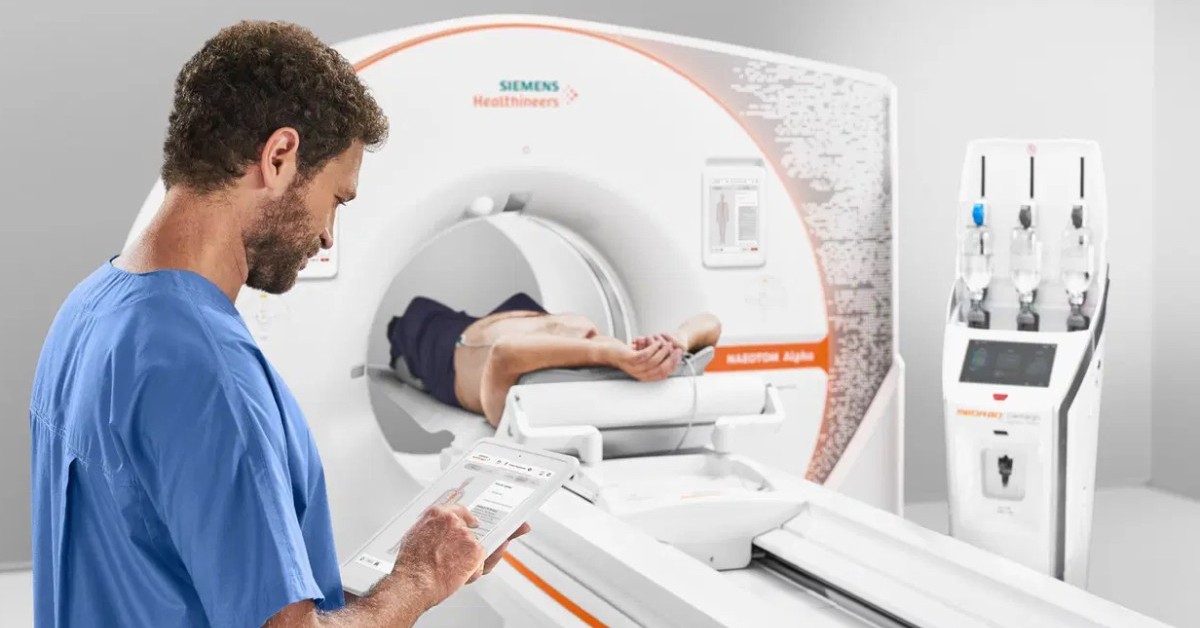
GERMANY – Siemens Healthineers is facing new challenges as new U.S. tariffs threaten to increase the cost of its cutting-edge photon-counting CT scanner, the Naeotom Alpha.
This scanner offers clearer images at lower radiation doses, but its future in the U.S. market could face delays and price hikes due to the proposed tariffs on European imports.
Despite these concerns, Siemens reported better-than-expected earnings for the second quarter of 2025 on May 7.
The German-based healthcare technology giant said it remains committed to its current production plans and has no immediate intentions to shift more manufacturing to the U.S. or raise product prices.
However, Siemens is preparing for more noticeable effects from the tariffs in the months ahead and has budgeted up to US$ 340 million to offset related costs—funds that could otherwise have gone to shareholder dividends.
CEO Bernd Montag noted that while Siemens had a strong quarter, global instability could affect business this year. As a result, the company adjusted its earnings guidance but kept its revenue growth expectations steady.
In Q2, Siemens generated $6.7 billion in revenue – a 25% increase from the same period last year. Imaging led the way with a 9% growth rate, while its Varian radiation therapy business saw orders grow by 13%. Advanced therapies rose 4%, and diagnostics is on track for a 6.3% increase.
Montag highlighted strong demand in the U.S., especially from outpatient centers and hospitals looking to do more with fewer resources due to rising patient numbers and staffing shortages.
New AI-powered systems from Siemens are helping healthcare facilities improve efficiency and patient throughput. Philips Healthcare echoed a similar message in its own earnings report.
Chief Financial Officer Jochen Schmitz added that molecular imaging, particularly with the use of new tracers in theranostics, drove growth in the U.S., alongside success in CT sales.
Siemens showcased new photon-counting CT models at the RSNA 2024 conference, which are already beginning to attract orders.
A major boost to Siemens’ North American business came from a new $600 million, eight-year partnership with Alberta, Canada, aimed at expanding medical imaging and cancer treatment services in the province.
While imaging grew sharply in the Americas, sales in Asia-Pacific rose slightly, and revenue in China and the EMEA region dipped slightly compared to the strong Q2 2024.
Impact of tariffs on Siemens
Siemens acknowledged in its Q2 statement that global trade issues and tariff increases continue to weigh on business performance.
Without the current tariff challenges, the company said it might have reached the upper end of its financial targets.
Schmitz estimated that tariffs could cost the company between US $227 million and US$ 340 million (pre-tax) in the second half of the year.
Siemens is preparing for U.S. tariffs on European goods to jump from 10% to 20% by July, and expects existing tariffs affecting trade with China, Mexico, and Canada to remain.
Siemens currently manufactures some imaging systems in Europe and exports them to the U.S., with these exports accounting for more than half of the tariff-related costs.
While the U.S. aims to push companies to shift manufacturing stateside, Siemens says such moves must make economic sense and aren’t quick decisions.
The company maintains a global workforce spread across the U.S. (30%), Europe (40%), Asia (20%), and China (10%). Montag believes Siemens is well-placed to adjust over time, thanks to its international production base.
If needed, Siemens will first consider smaller supply chain changes or price adjustments before taking major steps. The company is being cautious about raising prices as a first response to tariffs.
Regarding its operations in China, Siemens states that the Chinese government is unlikely to retaliate against foreign healthcare firms, as doing so could harm its own healthcare system.
Siemens employs about 8,000 people in China, including more than 1,000 in R&D. Montag believes China is listening to concerns and making some exemptions to ease pressures.
Still, he noted that investment growth in China is slower than expected, partly due to ongoing anti-corruption efforts and the slow rollout of economic stimulus. Chinese buyers remain hesitant, but Siemens remains hopeful about long-term opportunities in the region.
XRP HEALTHCARE L.L.C | License Number: 2312867.01 | Dubai | © Copyright 2025 | All Rights Reserved